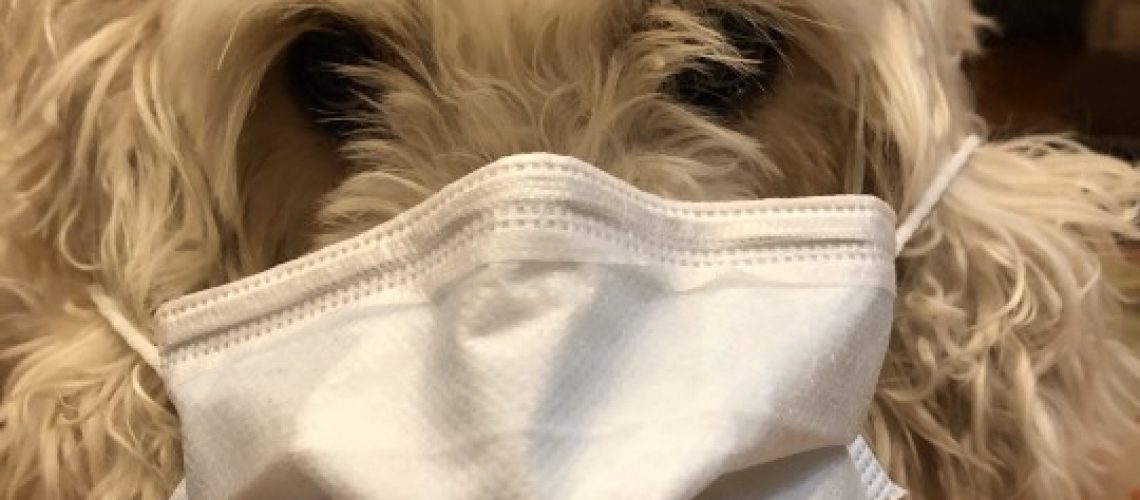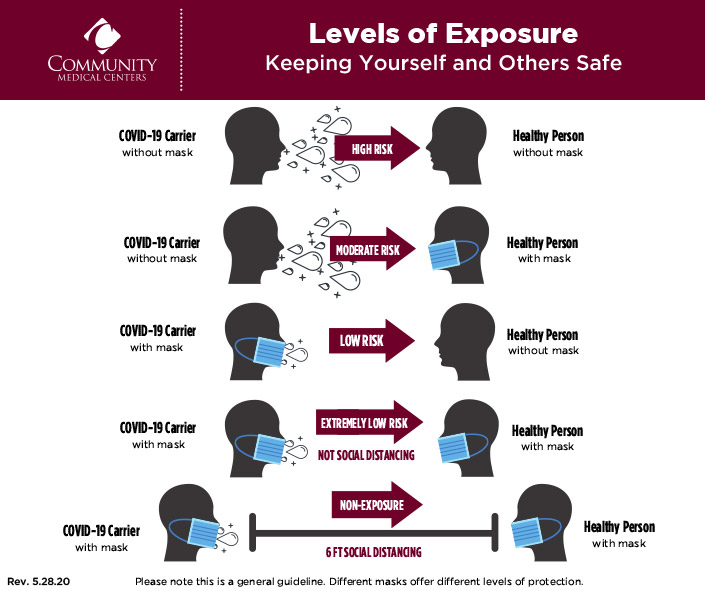Home » To Mask, or Not to Mask? Of COVID and Cacophony
To Mask, or Not to Mask? Of COVID and Cacophony

Every day, there is a fresh barrage of dissenting expert opinion, debate about the science, and the always entertaining vituperations of expert wannabes holding forth in social media. All about…wearing masks.
I am tempted to file this cacophony under “The Mask of Zero,” because while we throttle one another with lofty assertions about civil liberties and science, there is just about zero display of the one element most required in real time: sense. Homely, uncommon…sense. Allow me to explain.
I have yet to meet the parent or grandparent staking out a position opposing the “party line” on running with scissors. Everybody seems to be in on it: kids really shouldn’t run with scissors. Or, for that matter, cleavers, steak knives, bayonets…you get the idea. We can just stick with scissors as the standard bearer for all such items both pointy and sharp. Kids should run around sporting none of them.
And yet, where is the science? Where are the randomized trials? No one seems to be waiting for them. No one cares. Somehow, sense seems to suffice.
So, too, on the matter of crossing busy streets. I have yet to see the contrarian parent encouraging offspring to look neither way, close their eyes- and make a dash. I have not encountered the iconoclastic crossing guard with radical views on the topic. Again, everyone seems in on the conventional wisdom, and yet- informed by what? I have never read the definitive meta-analysis on the topic, have you?
I trust that will do. The defense of sense rests. Now, let’s talk COVID.
SARS-CoV-2 is principally a respiratory virus. I say “principally” because there is some evidence that it can exit our bodies by other routes, too- but first, foremost, and overwhelmingly- it does so in our breath.
When we exhale, we exhale a mix of gases that offer no haven to the virus; no virus can occupy a molecule of carbon dioxide, oxygen, or nitrogen. We also exhale water- in larger droplets we call droplets, and smaller droplets we call vapor. The virus rides there.
Leaving aside the distraction of drama attached to the size of the droplets we exhale, the simple fact is that we can only exhale SARS-CoV-2 in droplets of moisture, and only then if we are infected and shedding virus in the first place. That leads directly to the sensible adjudication of mask use.
Put almost anything over your mouth and nose- a N95 mask; a standard surgical mask; a bandana; an old sock; a lettuce leaf – and breathe through it for a bit. It will be moist, and that moisture came from you. If you were shedding virus, that moisture would contain virus.
The more moisture there is on the old sock, lettuce leaf, or N95 mask- the less there is floating in the air between you and me, or vice versa. It’s that simple.
The moisture we expel when talking, laughing, sneezing, coughing, singing, shouting, or pontificating about COVID…is the primary means by which we can transmit the virus to someone else, if we have it to begin with. So, the less moisture we put into the air, the less likely we are to infect anyone else- and if we do, the lower their exposure dose. That matters, too, because exposure dose plays a potentially important role in the severity of infection when it does occur.
All of this is clear and reliably true, with or without SARS-CoV-2 randomized transmission trials. All of this is logical, sensible, and actionable now, while waiting for as-yet unconducted meta-analyses.
But how does it translate into context-specific mask use? I like the infographic below. You can’t share virus if you don’t have it to share. But if you do, distancing lowers the risk of transmission, and so does mask wearing- if only on the basis of sense (the science will catch up eventually). As displayed, risk is minimized with a combination of distance and joint mask use.
Worth noting is that transmission of the virus is much less likely outdoors than in, in sunlight especially. Mask use outdoors is thus much less important, unless there is quite close and/or extended contact.
This does not mean, in my view, that everyone needs to wear a mask everywhere indoors, all the time. It only means we need to wear masks where (a) there is some risk of transmission, and (b) it is important that transmission not occur.
I maintain the position I had from the start that transmission of COVID19 among young, healthy people is not very concerning; infections in that group are overwhelmingly mild. Of course, even here the exposure dose is relevant- and mask use can reduce exposure dose by something like 90%. So, even for those of us who favor herd immunity by means of transmission among the young and healthy, there is a case for selective use of masks to manage exposure dose, and allow for immunity with the mildest possible infection.
More important, though, is the careful prevention of transmission from the young and healthy- to anyone else. Any time someone over 70 (or better yet, over 50) is in the mix; any time someone with any of the major risk factors (e.g., obesity, diabetes, heart disease, etc.) for severe COVID infection is in the mix – mask use is warranted. The only safe way through this that does not depend on a highly effective, universally distributed vaccine is herd immunity achieved by transmission among those not prone to severe infection, while shielding from exposure those who are so prone.
So, yes, that might mean you should wear a mask to protect someone else; perhaps your parent, or grandparent. Or, heaven forbid, maybe even a stranger.
Does that tread on your civil liberties? In my view, not at all. I am reminded of a statement made by an ethicist who spoke at a conference I convened at Yale many years ago: “my right to swing a stick ends where your nose begins.”
Similarly, if I am a potential source of a virus you cannot get without potentially dire consequences- then my obligation to wear a mask begins where my mouth and nose end. My civil liberties do not extend to killing you for the sake of my comfort or convenience.
What about the breathless (both figurative, and literal) expostulations regarding masks causing shortness of breath, carbon dioxide build-up, or- oh, I don’t know- your eyeballs catching fire? Well, if any of this nonsense were true- surgery would be a very fraught experience, wouldn’t it? After all, surgeons would be passing out routinely from asphyxiation mid-procedure.
So, come on, everybody, take a deep breath (with or without a mask), and let’s try to be reasonable. I am not aware of any science to prove that being reasonable is helpful, but it sure does make sense. My dog agrees.
-fin
This article was first published on LinkedIn.
No Goldendoodles were harmed in the making of this column.


